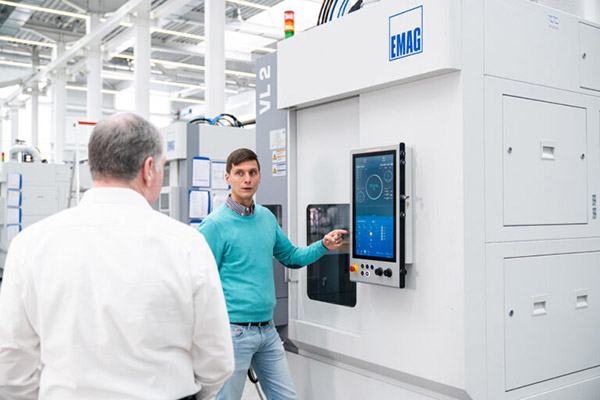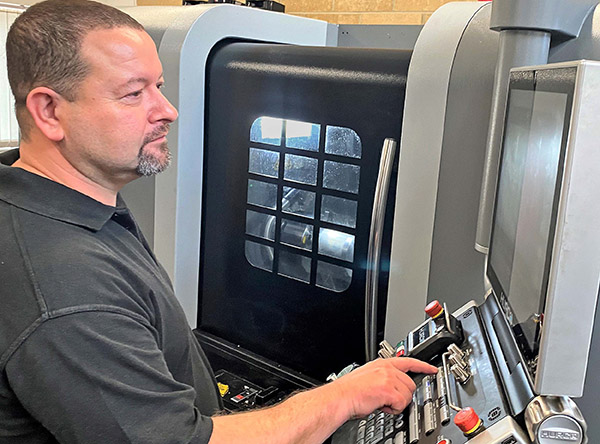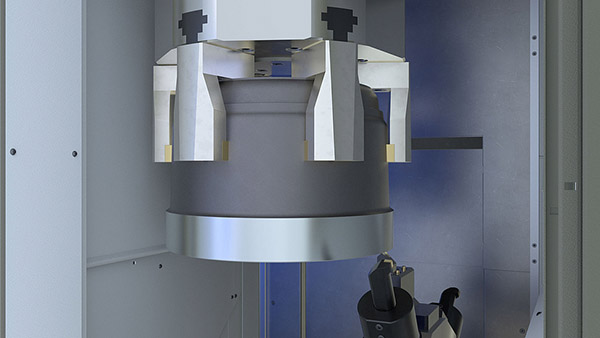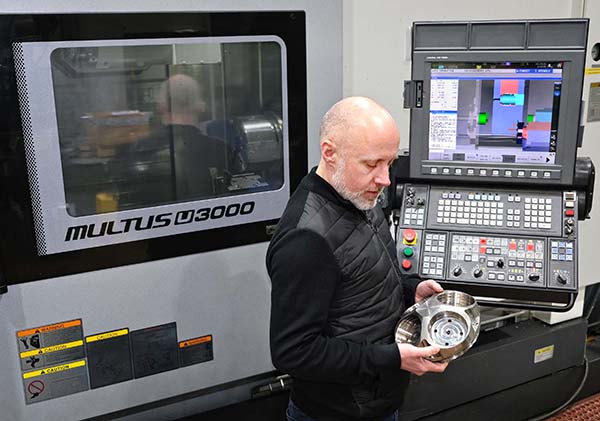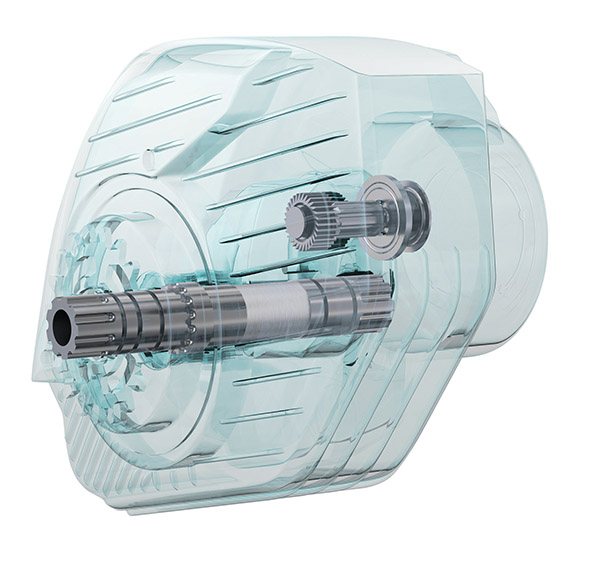
For many production planners, IoT in manufacturing is still a visionary principle: machines form a fully integrated system that production planners monitor, control and evaluate from a central location. However, this approach is no longer a vision of the future, as demonstrated by an impressive production solution at MAT Machining Europe GmbH, headquartered in Immenhausen. The automotive supplier manufactures differential gear housings on Emag production lines where full automation includes extensive data monitoring and evaluation of machine data. MAT’s aim is to increase line output and process reliability significantly.
The production process for the differential gear housing is impressive: the company has a total of five production lines, each with seven Emag vertical turning lathes, linked via TrackMotion from Emag. A so-called TransLift unit travels “through” the machines on a rail system and transports the component from one pick-up station to the next. Various preliminary processes are carried out on the housings: turning of the first side, including machining of fits and bores; turning of the second side and the outer contour; and – in the final set-up – internal machining of the spherical shape and fitting bores. Finally, washing, measuring and marking follow. In total, MAT produces almost 2 million differential gear housings every year at its Immenhausen location alone.
“Digitisation is naturally an important topic here,” says Axel Dräger, head of engineering at MAT Machining Europe. “At the same time, we knew that Emag has made great efforts around IoT in recent years and is quite interested in testing new IoT solutions with users and getting qualified feedback. So for both companies, the whole thing is a win-win situation.”
For further information
www.emag.com






